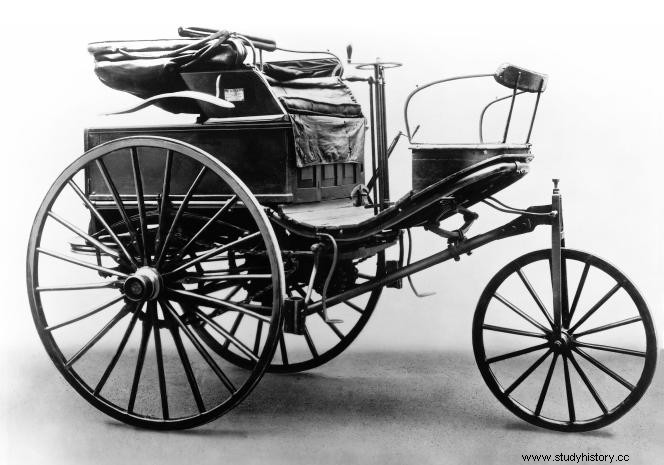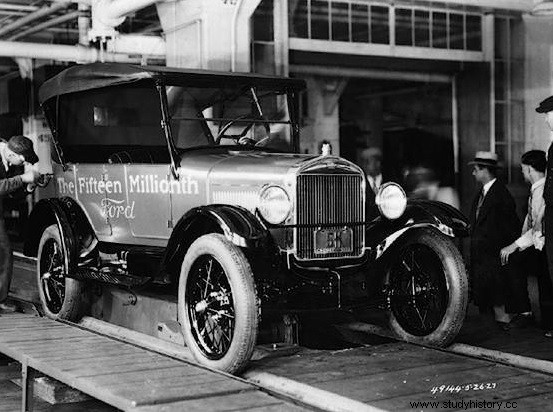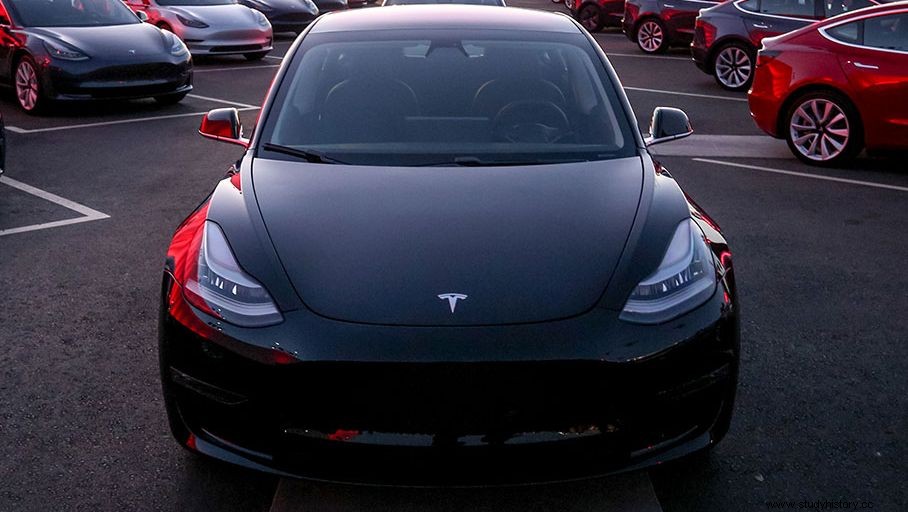 The Invention of the Automobile and the development of the first car have revolutionized the field of transport. From the first experiments in individual locomotion to autonomous and connected electric cars, the automobile is constantly reinventing itself. This innovation had universal economic and social consequences that are difficult to compare. Never perhaps has a technical object been so assimilated and tamed, nor so invested with passions and mythologies, on a personal or collective basis. Nowadays, manufacturers are working on ever more compact models, equipped with new engines (electric, solar, hydrogen, etc.) and new safety equipment (anti-collision system, smart car, etc.).
The Invention of the Automobile and the development of the first car have revolutionized the field of transport. From the first experiments in individual locomotion to autonomous and connected electric cars, the automobile is constantly reinventing itself. This innovation had universal economic and social consequences that are difficult to compare. Never perhaps has a technical object been so assimilated and tamed, nor so invested with passions and mythologies, on a personal or collective basis. Nowadays, manufacturers are working on ever more compact models, equipped with new engines (electric, solar, hydrogen, etc.) and new safety equipment (anti-collision system, smart car, etc.).
The beginnings of automotive history
Before the automobile, men used carriages, that is, sledges or wheeled carts pulled by a man or by pack animals. The first attempts to mount a steam engine on a car date from the 17th century; but it was not until the end of the 18th century that inventors and engineers began to have some success. The first automobile (“vehicle that moves by itself”) was built in 1770 by the Frenchman Joseph Cugnot.
 A military engineer, Cugnot replaced the horse with a third wheel driven by a steam engine with the intention of mechanizing the artillery trailer used to transport guns. These tests, although not conclusive, had the merit of drawing attention to the interest of high pressure steam as a driving force. However, his attempt, like those of his French, American and British successors, was not really effective, because the steam engine was too heavy and inefficient. The engineers then turned instead to the improvement of the railway, and the automobile was left aside until the invention of a less bulky, lighter and more efficient engine:the internal combustion engine.
A military engineer, Cugnot replaced the horse with a third wheel driven by a steam engine with the intention of mechanizing the artillery trailer used to transport guns. These tests, although not conclusive, had the merit of drawing attention to the interest of high pressure steam as a driving force. However, his attempt, like those of his French, American and British successors, was not really effective, because the steam engine was too heavy and inefficient. The engineers then turned instead to the improvement of the railway, and the automobile was left aside until the invention of a less bulky, lighter and more efficient engine:the internal combustion engine.
What is the first car in the world?
 Carl Benz shares, with the German Gottlieb Daimler, the paternity of the construction in 1885 of the first car, a three-wheeled vehicle equipped with an internal combustion engine. Nevertheless, the question arises as to who, between Germans and French, invented the first automobile and the answer that can be given to it is never innocent and deserves to be expanded.
Carl Benz shares, with the German Gottlieb Daimler, the paternity of the construction in 1885 of the first car, a three-wheeled vehicle equipped with an internal combustion engine. Nevertheless, the question arises as to who, between Germans and French, invented the first automobile and the answer that can be given to it is never innocent and deserves to be expanded.
According to a French approach with a sometimes chauvinistic tendency, the automobile was born with the patent filed on February 12, 1884 for "a gas engine and its applications", which became a fixed engine on an automobile by Édouard Delamare-Deboutteville and Léon Malandin. Strictly French, this genealogy neglected the internal combustion engine developed two years later across the Rhine by engineers CarilBenz and Gottlieb Daimler, and taken over by the French manufacturer Panhard &Levassor on its first models, which were the first to be produced. in series and sold by catalog.
The choice of engine
Very early on, the history of the automobile was ordered, and from the second International Automobile Exhibition in Paris, in 1899, an aisle was devoted to a retrospective of the ancestors . Even more spectacular and more complete was, during the tenth edition of the exhibition in 1907, the retrospective gallery which prominently featured Cugnot's truck, a true prehistoric legend dated 1770, Amédée Bollée's Mancelle from 1878, a De Dion-Bouton tricycle from 1885, a Daimler draisine from 1887 and a De Dion-Bouton steam omnibus from 1896. However, if it lacked Étienne Lenoir's gas vehicle, a copy of which is said to have crisscrossed Paris in the beginning of the 1860s - it also inspired Jules Verne -, Brasier and Renault cars were still presented, as well as electric vehicles.
The first achievement of the automotive object concerned the overall design of the vehicle, which everyone admits did not evolve fundamentally over the following decades in terms of transmission, steering or bodywork, while the problem of motorization had not yet been definitively settled. At that time, the relative impasse of the electric automobile was far from having been demonstrated, even if some foresaw it:dominating the end of the century, rivalry between modes of propulsion had enabled electricity to take first time a car above 100 km/h. Crossed on April 29, 1899 by the Belgian Camille Jenatzy's Never Happy, this psychological threshold of pure three-digit speed was important.
The automobile becomes an industry
In 1900, the United States, France and Germany already produced 9504 cars. Eight years later, Henry Ford invents his model T, which he will build millions of copies on his assembly lines. Thanks to him, individual rapid transport for all is born. Ford will impose its production standards on the entire automotive sector and more broadly on the entire industry from the beginning of the 20th century.
 In Europe, it was not until the post-war economic recovery that the automobile became more democratic:Volkswagen's "Beetle", Renault's 4CV and Citroën's 2CV achieved considerable popular success, and several million units were sold. The exponential increase in the number of wheeled vehicles and their speed has led to the implementation of the highway code and driving licenses.
In Europe, it was not until the post-war economic recovery that the automobile became more democratic:Volkswagen's "Beetle", Renault's 4CV and Citroën's 2CV achieved considerable popular success, and several million units were sold. The exponential increase in the number of wheeled vehicles and their speed has led to the implementation of the highway code and driving licenses.
The automobile has revolutionized transportation and brought about profound social changes, particularly in the relationship of individuals to space. It has favored the development of economic and cultural exchanges and led to the massive development of new infrastructures (roads and highways, car parks). From Ferdinand Porsche to André Citroën via Louis Renault, the names of the great captains of the automotive industry still resonate in our daily lives.
Contemporary issues of the car
In the 1970s, the automobile had to adapt to new challenges. The oil crises (1973 and 1979) caused the rise in the price of gasoline and the fear of a shortage of gasoline. Manufacturers then began to build smaller cars. They are working on engines to increase their efficiency and thus allow automobiles to go further on the same amount of gasoline. They improve the shape of the bodies, making them more aerodynamic.
 At the same time, we are beginning to become aware of the dangers of the road:motorists are more and more numerous, and cars, more efficient, allow them to drive faster. The number of accidents, as well as their severity, are increasing dramatically. While car manufacturers are reinforcing vehicle safety equipment, the public authorities are taking a certain number of measures (improvement of the road network, construction of motorways, road safety, speed limit, wearing of seat belts, technical control for used cars etc.).
At the same time, we are beginning to become aware of the dangers of the road:motorists are more and more numerous, and cars, more efficient, allow them to drive faster. The number of accidents, as well as their severity, are increasing dramatically. While car manufacturers are reinforcing vehicle safety equipment, the public authorities are taking a certain number of measures (improvement of the road network, construction of motorways, road safety, speed limit, wearing of seat belts, technical control for used cars etc.).
Finally, the increasing number of cars on the roads leads to another crucial problem:automobile pollution. Catalytic converters can eliminate certain pollutants, but not carbon dioxide (or carbon dioxide, CO2) which contributes to increasing the greenhouse effect, and therefore to warming the planet. It is now towards the development of the electric car that car manufacturers, such as the American Tesla, are focusing most of their investments to meet this environmental challenge.
To go further
- The Incredible History of the Automobile, by Giles Chapman. Glénat Youth, 2018.
- Another automobile history, by Jean-Louis Loubet. PURE, 2017.
- 1200 legendary cars. Larousse, 2014.
